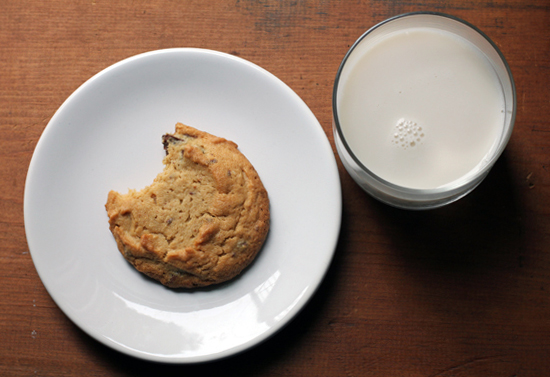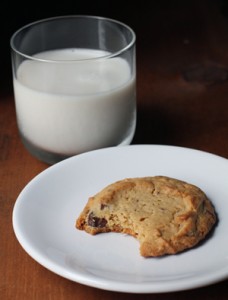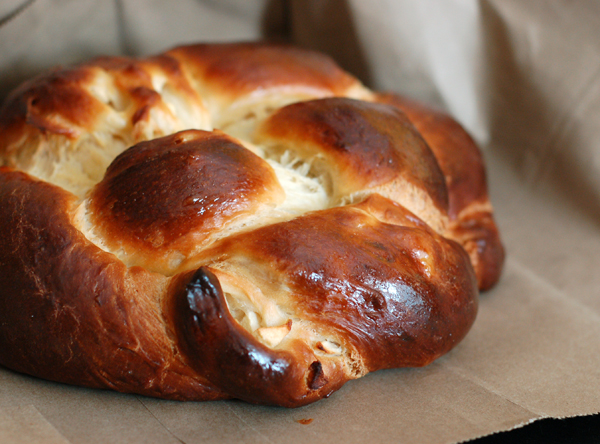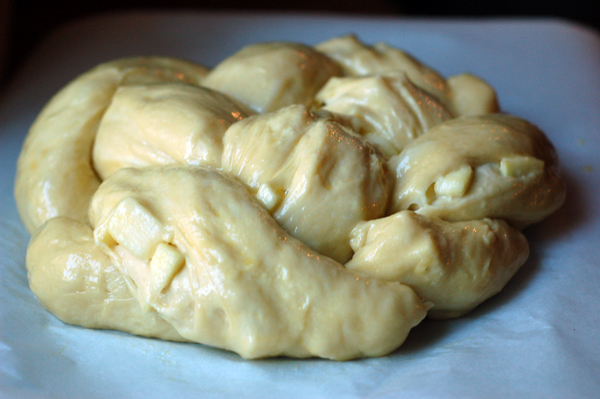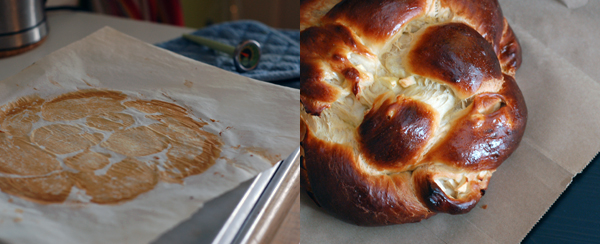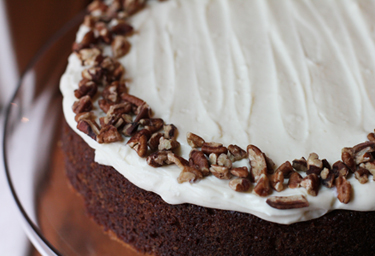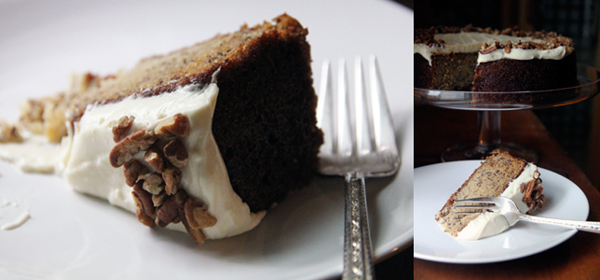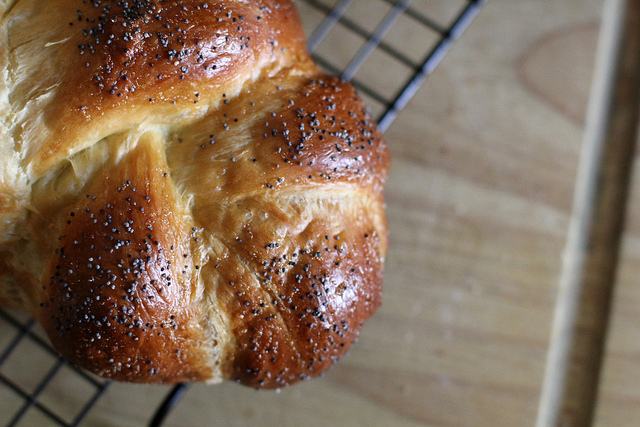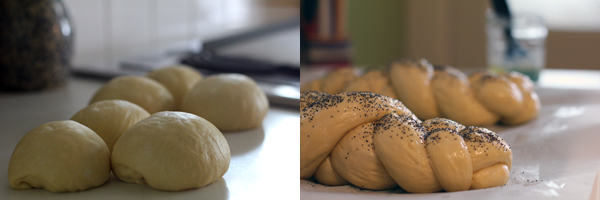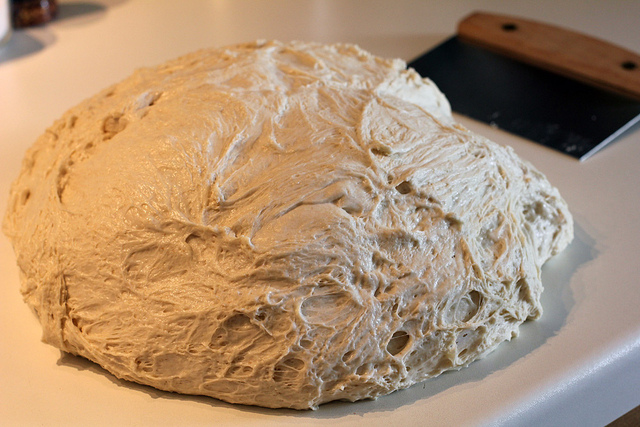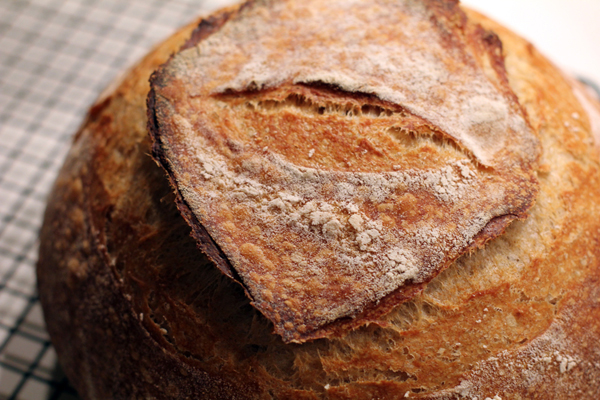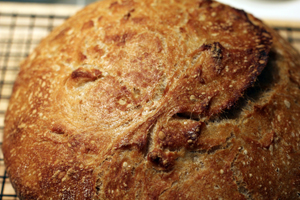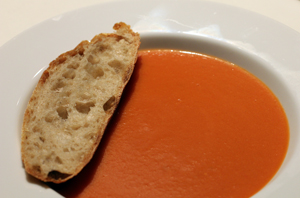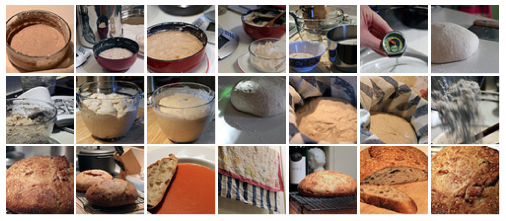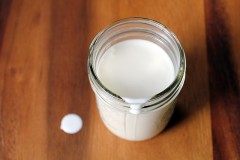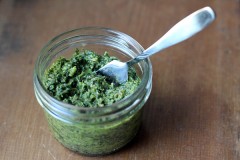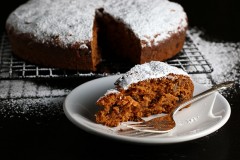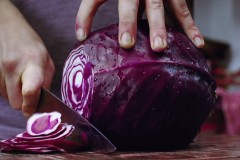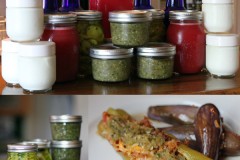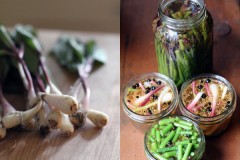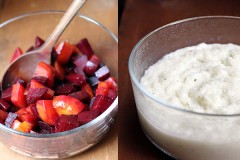I’m traveling a lot lately, which is probably how I got to reminiscing about all the globe-trotting adventures I used to have when I was younger and less gainfully employed.
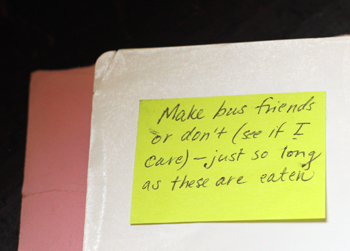 Greyhound carted me between cities scattered across the Northeast one memorable summer, and I took advantage of frequent layovers to spend time with friends who didn’t mind sharing their couches and their kitchens. I still have a little Post-It note that was attached to a sack lunch I was packed off with once. I didn’t have much of a sweet tooth, but it was suggested that on a multi-state bus ride, cookies could turn out to be a valuable commodity. Even though I was heading off down the road again, I didn’t need to go it alone (one way or the other).
Greyhound carted me between cities scattered across the Northeast one memorable summer, and I took advantage of frequent layovers to spend time with friends who didn’t mind sharing their couches and their kitchens. I still have a little Post-It note that was attached to a sack lunch I was packed off with once. I didn’t have much of a sweet tooth, but it was suggested that on a multi-state bus ride, cookies could turn out to be a valuable commodity. Even though I was heading off down the road again, I didn’t need to go it alone (one way or the other).
Desserts are not normally my thing, it’s true, but the sweet and savory one-two punch of these Salted Peanut Butter Cookies called out to me when I spotted them just a few days ago on Orangette. So much so that this recipe shot to the top of my “To Make ASAP” list.
I made a half-batch the first time out, even though I strongly suspected in advance that I was going to love their sweet and salty contrast. The recipe scaled down for me very easily (especially if you are weighing all your ingredients). I still ended up with 16 good-sized cookies (3″-4″ across), and I suspect that travel buddies old and newly met will help me make them disappear quickly enough. Unless I accidentally end up eating them all myself.

Salted Peanut Butter Cookies
Adapted from Autumn Martin and Hot Cakes Confections (via Orangette)
240 grams (2 cups plus 1 tsp.) pastry flour
5 grams (1 tsp.) baking soda
12 grams (1 T. plus 1 tsp.) kosher salt
275 grams (2 sticks plus 3.5 T.) unsalted butter, at room temperature
200 grams (about 1 ¼ cup, packed) dark brown sugar
170 grams (¾ cup plus 2.5 T.) sugar
2 large eggs
400 grams (1 ½ cup) natural salted creamy peanut butter
2 tsp. vanilla extract
170 grams (2 bars of 3 oz. each) milk chocolate, chopped
Preheat the oven to 350°F.
I very rarely bake, but when I do, I try to actually lay out and pre-measure all of my ingredients before beginning to mix. While cooking on the fly without a formal mise en place doesn’t often trip me, I find that the baking experience is considerably less stressful when all the pantry rummaging and ingredient portioning is done in advance. On top of that, I use my kitchen scale for accuracy–therefore avoiding worries that my flour is packed either too loosely or too tightly, or that I’ll fumble while leveling off a measuring cup and end up wearing half of it. So, with that strategy in mind:
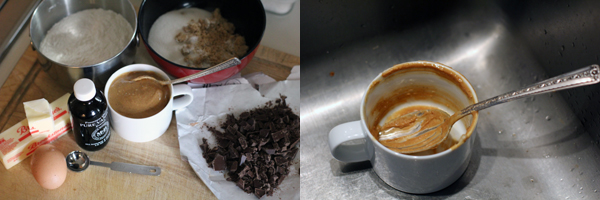
In bowl #1 measure out the brown and white sugar.
In bowl #2 measure out the peanut butter and the vanilla.
In bowl #3 measure out the flour, baking soda, and salt. Whisk to combine.
Finally, in the bowl of a stand mixer (if that’s what you’re using) or a large mixing bowl, place softened butter. Beat in sugars, and then eggs (one at a time). Scrape down the bowl, add in the peanut butter and vanilla, and beat until well combined. Add the dry ingredients in several portions, mixing gently to incorporate fully. Finally, add in the chocolate pieces and mix just long enough to evenly incorporate. Scrape down bowl and beater(s).
Using a scoop or large spoon, scoop batter onto a baking sheet lined with parchment paper. I safely used a scant 1/4 cup of dough and could fit 9 cookies per sheet, but start conservatively as they do spread out and you don’t want them all running together. Bake for 15 minutes, just until the sides begin to color and the top still looks undercooked. I over-baked my first batch, and while they were good, the soft and chewy second pan was the clear winner. Allow to cool completely on a rack before removing from the pan.
According to Orangette, this dough–scooped out and frozen in single-cookie-sized portions–stores really well. Just bake the cookies without defrosting as above, but you’ll probably need to extend the baking time to 20 minutes. Sounds like a wonderful(ly dangerous) impromptu treat, if you ask me. Good to have should friends unexpectedly pull into town.

